For hobbyists, makers, and small workshops, two desktop machines often come up in the same conversation: CNC routers and laser engravers. Both can cut, carve, and create impressive projects, and both fit in compact spaces at accessible price points. Yet they excel in different areas. This guide compares how they work, what materials they handle best, and the kinds of projects each machine is built to do.
In This Guide
- How They Work
- Materials & Capabilities
- Precision & Detail
- Cutting Depth & Thickness
- Speed & Workflow
- Safety & Maintenance
- Costs
- Best Use Cases
- Quick Comparison Table
- Which One Should You Choose?
Photo Credit: Cutting in Close on Youtube
How They Work
CNC Router
A CNC router is a subtractive tool that removes material using rotating cutting bits (end mills, V-bits, ball nose cutters). The cutting head moves in multiple axes (commonly three on desktop machines) to shape the stock, cut parts, and machine pockets with precision.
Laser Engraver
A laser engraver uses a high-powered beam of light to burn, vaporize, or cut material. There’s no tool contact; it relies on concentrated energy. Lasers excel at crisp engraving, thin-sheet cutting, and high-contrast, detailed graphics.
Materials & Capabilities
CNC Router
- Wood: hardwood, softwood, plywood, MDF
- Plastics: acrylic, HDPE, polycarbonate
- Soft metals: aluminum, brass (with proper feeds/speeds)
- Composites: carbon fiber, PCB materials
Laser Engraver
- Wood: engraving and cutting (wattage dependent)
- Acrylic: clean cuts with polished-looking edges
- Leather & textiles: engraving and cutting
- Paper & cardboard: fine detail cutting
- Coated metals: engraving only (unless fiber laser)
Precision & Detail
- CNC Router: Detail is limited by bit diameter. Excellent for smooth curves, accurate dimensions, and functional parts.
- Laser Engraver: Extremely fine line work, intricate text, photo engraving. Depth is limited compared to CNC.
Bottom line: Choose a laser for fine engraving; choose a CNC router for 3D carving and functional shaping.
Cutting Depth & Thickness
- CNC Router: Deep cuts into thick stock; cutting through 18–20 mm wood sheets is routine on a capable desktop machine.
- Laser Engraver: Depth depends on power. Diode lasers (10–20 W) cut thin wood/acrylic in multiple passes; higher-power CO₂ lasers cut thicker but cost more and take more space.
Speed & Workflow
- CNC Router: More setup (workholding, tool changes). Slower for deep cuts or 3D work.
- Laser Engraver: Quick to set up and fast for engraving and thin-sheet cutting.
Safety & Maintenance
- CNC Router: Chips and dust require collection; higher noise. Maintain collets, check runout, replace bits.
- Laser Engraver: Fumes require ventilation/filtration; eye safety is critical. Maintain optics, fans, and replace modules/tubes over time.
Costs

CNC Routers
- Entry-level hobby machines: ~\$400–\$800
- Mid-range desktop: ~\$1,000–\$2,000
- Ongoing: bits, spoilboards, clamps, dust collection

Laser Engravers
- Entry-level diode lasers: ~\$250–\$600
- Higher-power CO₂: \$2,000+
- Ongoing: lenses, tubes/modules, protective covers, filtration
Takeaway: Desktop lasers often have a lower entry cost. CNC routers typically require more investment but offer broader material flexibility and depth.
Best Use Cases
CNC Router
- Furniture parts, cabinetry, joinery
- 3D relief carvings in wood
- Functional parts, jigs, fixtures, molds
- Machining aluminum or composites (with proper setup)
Laser Engraver
- Personalization (names, logos, photos)
- Sign-making and intricate vector designs
- Thin acrylic craft parts and inlays
- Leatherworking and jewelry
Quick Comparison Table
| Feature | CNC Router | Laser Engraver |
|---|---|---|
| Material versatility | Wood, plastics, soft metals, composites | Wood, acrylic, leather, paper; coated metals for marking |
| Depth | Deep cuts (e.g., 18–20 mm wood) | Surface engraving / thin-sheet cutting |
| Detail | Good; limited by bit diameter | Excellent; crisp fine lines, photos |
| Speed | Moderate; slower for deep/3D work | Fast for engraving and thin cuts |
| Safety | Dust and noise; use collection/PPE | Fumes and eye safety; use ventilation |
| Entry cost | ~$500+ | ~$250+ |
| Best for | 3D carving, furniture, functional parts | Engraving, signs, personalization |
Which One Should You Choose?
- If your projects involve carving, thick wood cutting, or functional items, choose a CNC router.
- If you engrave, personalize, or cut thin sheet materials quickly, choose a laser engraver.
- Many makers benefit from owning both; they complement each other.
Explore desktop machines from TwoTrees:





